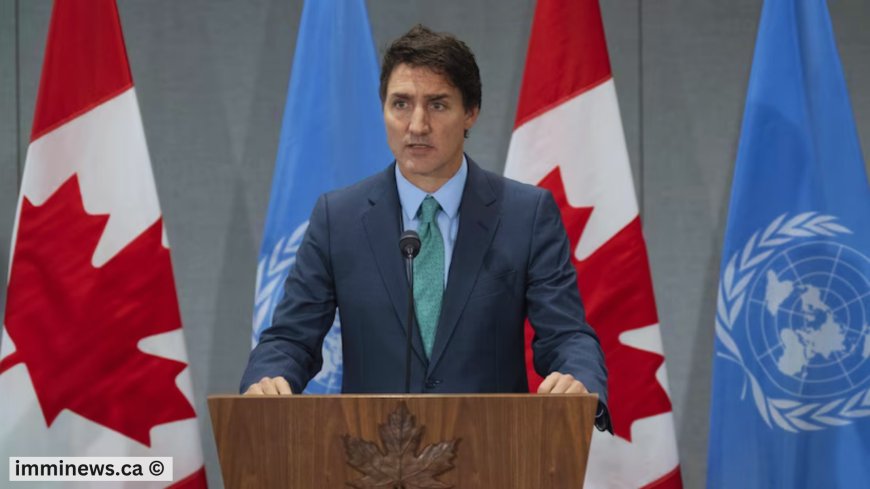The End of Booming Colleges? Canada’s Student Visa Cap Explained
Explore the impact of Canada's immigration policy changes on colleges, student permits, and foreign worker trends, highlighting economic and social challenges.

Recent shifts in Canada’s immigration policies, led by Prime Minister Justin Trudeau’s government, have sent ripples through the country’s higher education sector. These adjustments, aimed at managing population growth and alleviating housing and labor market pressures, have raised concerns across industries reliant on international newcomers.
Policy Shifts and Their Objectives
In an effort to control unprecedented population growth, the government has introduced caps on foreign student permits, tightened regulations on temporary workers, and reduced permanent resident targets. The overarching goal is to ease strain on housing, public services, and the job market by significantly reducing the number of temporary residents over the next two years.
While policymakers believe these measures will help stabilize the system, critics warn the changes may be overly ambitious, with potentially unintended consequences for sectors like higher education.
Higher Education Sector Faces the First Wave
The post-secondary education sector, a major beneficiary of international students, has been hit hard by these restrictions. Colleges, once thriving on record-high intakes, are now grappling with declining enrollments, program cuts, and job losses.
- Ontario’s Colleges in Decline:
- Sheridan College has suspended 40 programs and reduced staffing.
- Mohawk College anticipates layoffs of up to 400 employees.
- Seneca Polytechnic closed a campus dedicated to international students.
- Fleming College and Fanshawe College have halted numerous programs and are reevaluating their strategies for sustainability.
Private institutions like Ace Acumen Academy are especially vulnerable. With no new student enrollments this fall, many private colleges are struggling to sustain operations, raising fears of closures and layoffs.
Broader Economic Implications
The effects of these restrictions extend beyond education:
- Labor Market Pressures: Reductions in temporary foreign workers could exacerbate labor shortages, potentially lowering economic output and increasing wage pressures.
- Impact on Inflation and Growth: Economists are divided on how the policy shifts will influence inflation and interest rates, but some argue they may contribute to economic instability.
Challenges for Smaller Communities and Partnerships
Smaller communities, reliant on the economic activity generated by foreign students, are feeling the brunt of these changes. Private colleges that partnered with public institutions to offer accredited programs are particularly affected, as graduates from these partnerships are no longer eligible for post-graduation work permits.
In Windsor, Ontario, Ace Acumen’s partnership with St. Clair College once funneled millions into the local economy. Now, dwindling enrollments threaten the region’s economic vitality, leaving colleges and communities alike uncertain about their future.
Uneven Impact Across Institutions
While some colleges, such as Conestoga in Kitchener, continue to see high international student numbers, others are struggling to adapt. Colleges Ontario estimates that revenue losses due to the cap on foreign students could reach C$1.7 billion over two years.
Even for institutions with healthier margins, such as Conestoga, the long-term effects of these policies remain uncertain as they face declining enrollments and resource challenges.
Canada’s Reputation at Stake
Canada’s reputation as a destination for international education is under threat. With students and consultants increasingly opting for other countries, the nation risks losing its standing as a preferred destination for talented young individuals.
Universities, which contribute an estimated C$45 billion to the economy annually, are also experiencing lower-than-expected international enrollments. As uncertainty looms, the higher education sector continues to face difficult questions about its future.
Voices from the Sector
Educators, administrators, and students have expressed deep concerns over these policies. While acknowledging the need for regulation, many believe the current measures are overly harsh.
- Educators Speak Out: Many instructors, especially those in private colleges, fear job losses as student numbers dwindle.
- Students Face Hardship: International students report difficulties finding housing and employment, further complicating their path to permanent residency.
Looking Ahead
The Canadian government’s efforts to reform immigration policies have sparked a critical moment for higher education and other industries dependent on international newcomers. Balancing growth and sustainability will be essential to ensuring that Canada remains competitive on the global stage while addressing domestic challenges.
As the higher education sector adapts to this new reality, it remains to be seen how institutions, policymakers, and communities will navigate the complex challenges ahead.
What's Your Reaction?
 Like
0
Like
0
 Dislike
0
Dislike
0
 Love
0
Love
0
 Funny
0
Funny
0
 Angry
0
Angry
0
 Sad
0
Sad
0
 Wow
0
Wow
0









































































